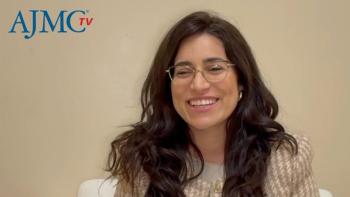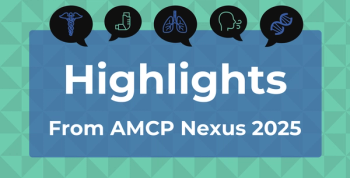
Essential Guidance for Pharmacists on Credible Vaccine Data: Brigid Groves, PharmD, MS
Brigid Groves, PharmD, MS, discusses the importance of using trustworthy sources so that pharmacists can support communities with accurate information.
As the 2025 fall respiratory virus season approaches, pharmacists will face a surge in patient questions and an evolving landscape of vaccine recommendations, explained Brigid Groves, PharmD, MS, vice president, professional affairs, American Pharmacists Association (APhA). By focusing on trustworthy recommendations and robust evidence, pharmacists can confidently support their communities with accurate information and ensure patients receive the highest quality care during the upcoming vaccine season.
This transcript was lightly edited; captions were generated.
Transcript
How should pharmacists prepare for the possibility of major vaccine schedule changes, and what concrete steps can they take now to ensure they are ready to support patients and families through confusion or transitions?
This upcoming fall respiratory virus season, we are seeing additional recommendations and guidance come out from a variety of different organizations and associations. Now, these issuing organizations and associations have done this type of vaccine-related work in the past, and so it's certainly not outside of the norm for them to have guidance and have recommendations; we just probably weren't as accustomed to hearing it so readily in years past. Pharmacists should certainly prioritize looking at highly credible, reputable data and evidence that is used to generate these recommendations and then reflect on the issuing organizations, again, assuring that credibility and reputability.
For example, we see things coming out of our CDC and the guidance coming out from the ACIP [Advisory Committee on Immunization Practices] that then the CDC uses to build the schedules. We have also observed organizations like the American Academy of Pediatrics issuing guidance and recommendations for pediatric patients. They have done that for many, many years, so reflecting on the work that they do and leaning into it from a pharmacist standpoint, knowledge is certainly aligned similarly.
The American College of Obstetricians and Gynecologists, the American Academy of Family Physicians, and different groups coming out with different, more aligned guidelines are really valuable for our pharmacists to ensure that they have that guidance to navigate through. We are hearing that patients are coming to the counter or calling their pharmacist to ask for clarity. Your pharmacist is your trained individual to know how to move through some of this data and evidence and identify what's the best recommendation for you individually for this upcoming vaccine season.
From the vantage of a pharmacy professional, how important are transparency and perceived integrity of advisory committees for maintaining vaccine confidence among patients?
From the perspective of a pharmacist, we consistently look at data, evidence, and the information that's available for us for any type of medication, any type of device, and any type of product that we're going to work with a patient on, so in this case for vaccines, we ensure that the data that is being evaluated comes from a credible resource. It comes from a high-quality, high-quantity number of studies, and evidence is going to be essential, much like it is for any other medication or product that a patient may use and a pharmacist may recommend having transparency in that process.
Making sure that we have an understanding of where that data came from is also very important, because we want to ensure that it truly does represent the patient population that we're working with, or that we're going to be recommending a vaccine for, or maybe assessing against some of the risks or contraindications. Looking at sources of information that, if you're going online, as an example, you want to go to our .edus or .gov or more of those types of locations to review that evidence and data versus going to social media, [which] can sometimes be a challenging place to find that, because we don't know exactly what went into some of the content that may have been generated behind that. Leaning into those reputable, credible resources is going to be the best way to do that.
Newsletter
Stay ahead of policy, cost, and value—subscribe to AJMC for expert insights at the intersection of clinical care and health economics.













































